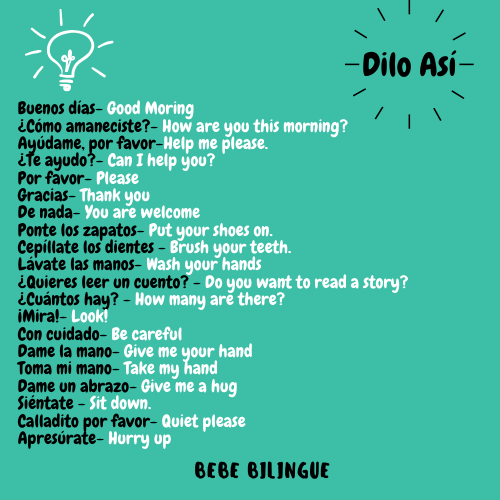How to Support a Home Language

In the past, parents were told to drop their home language and concentrate on the school language. However, this has been proven that it isn’t the best for a child’s language development. The best thing that parents can do is continue to speak the minority language at home, while their children are educated in the school language. As a result, children have the best chance of being bilingual.

When bilingual children start school in a language that is different than the one they speak at home, it can be challenging for both the child and the parent. Learning how to work with bilingual children, and support a home language, is an important part of meeting their educational needs.
Research shows that children who have a strong home language are capable of learning additional languages more easily. While speaking one language at home, children are more likely to excel at school in the community language.
If you are teaching kids Spanish at home or at school, be sure to check out our Resources page. You’ll find lots of helpful, inspiring information.
Use phrases in context
Below is a list of common Spanish phrases that you can incorporate into your daily routine. You can personalize the list, adding things you say to your child on a regular basis. These common Spanish phrases and questions are used over and over again, so children have the chance to hear them repeatedly and internalize the meaning and structure.
Common Spanish Phrases to use with kids: A printable List
Say it like this – Dilo así

Start the day
– Buenos días – Good morning
– ¿Cómo amaneciste? – How are you this morning? (How did you sleep?)
– Cepíllate los dientes. – Brush your teeth.
– Lávate las manos – Wash your hands.
– Tiende la cama. – Make your bed.
– Ponte los zapatos. – Put on your shoes.
– Amárrate los zapatos – Tie your shoes.
– Dame un abrazo. – Give me a hug.
Be considerate
– Por favor – Please
– Gracias – Thank you
– De nada – You’re welcome.
– Ayúdame, por favor. – Help me please.
– ¿Te ayudo? – Can I help you?
Some Basics
– ¿Cuántos hay? – How many are there?
– ¡Mira! – Look.
– ¿Dónde estás? – Where are you?
– Cierra la puerta. – Close the door.
– Apágalo. – Turn it off.
Stay safe
– Con cuidado / Ten cuidado – Be careful.
– Dame la mano. – Give me your hand.
– Toma mi mano. – Take my hand.
– Camina, por favor. – Walk, please.

– No corras. – Don’t run.
– Ven acá. – Come here.
– No toques. – Don’t touch.
– Siéntate. – Sit down.
– Muy calladito/a por favor – Be really quiet.
Encouragement and game playing
– Me gusta – I like it.
– ¿Te gusta? – Do you like it?
– Dime otra vez. – Tell me again.
– Hazlo de nuevo – Do it again.
– Me encanta. – I love it.
– Lo haces bien. – You do that well.
– Lo hiciste bien. – You did it really well.
– Bien hecho. – Well done.
– Intenta otra vez. – Try again.
– Ganaste. – You won.
– Gané. – I won.
– Me toca. – It’s my turn.
– Te toca. – It’s your turn.
Mealtime
– Pon la mesa – Set the table.
– ¿Quieres agua? – Do you want some water?
– ¿Tienes hambre? – Are you hungry?
– A comer – Come eat.
– Es hora de comer – It’s time to eat.
– Come. – Eat.
– Cómetelo – Eat it up.
– ¿Quieres más? – Do you want more?
– ¿Acabaste? – Are you done?
Common Spanish phrases for bedtime
– Guarda los juguetes – Pick up your toys.
– A la cama – Time for bed.
– Apaga la luz. – Turn off the light.
– Es hora de dormir. – It’s time to go to sleep.
– Es hora de ir a la cama. – It’s time for bed.
– ¿Quieres leer? – Do you want to read a story?
– Buenas noches – Good night
– Que descanses. – Sleep well. (Sleep tight.)
– Que sueñes con los angelitos. – Sweet dreams.
– Te adoro. – I love you (I adore you).
– Te quiero. – I love you.

